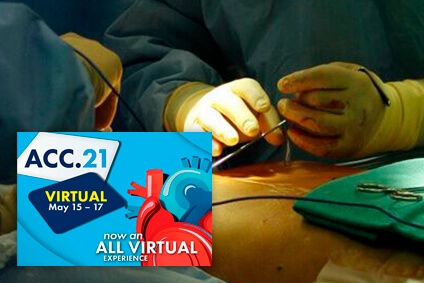The latest figures show a lower number of emergency CABG for acute MI, and in turn increased primary PCI.

The combination of surgeons not willing to take risks and interventional cardiologists empowered to treat practically any lesion has resulted in fewer patients receiving emergency CABG. Only a few years ago, interventional cardiologists at least had the “courtesy” to agree on a treatment strategy with the surgeon on call. Several years of choosing PCI over CABG have granted interventionists clearance to bypass surgeons and directly proceed to percutaneous intervention, practically in every center.
This study presented today at ACC 2021 simultaneously published in JAHA, shows the figures behind the above statements. Comparing the years 2000 and 2017, emergency CABG saw a 90% reduction.
It is also clear that surgical techniques and post operatory care have improved in the same period. This has contributed to keep a clear benefit in terms of mortality, despite volume reduction and case selection.
When comparing patients undergoing surgery in the first part of the study vs the second part, some interesting information becomes clear.
Read also: ACC 2021 | LAAOS III: Appendage Closure During Central Vascular Surgery.
Patients treated in the second, most recent period, were more frequently non-STEMI cases (80.5% vs 56.1%), more often presented non-cardiac multiorgan failure (26.1% vs 8.4%), presented cardiogenic shock (11.5% vs 6.4%) and received mechanical circulatory support (19.8% vs 18.7%; p< 0.001 for all comparisons).
Despite all the above mentioned, mortality in these periods resulted similar (5.3% in 2000 vs 3.6% in 2017).
Original Title: Temporal trends, clinical characteristics and outcomes of emergent coronary artery bypass grafting for acute myocardial infarction in the United States.
Reference: Patlolla SH et al. Presentado en el congreso de la ACC 2021 y publicado simultáneamente en J Am Heart Assoc.
Subscribe to our weekly newsletter
Get the latest scientific articles on interventional cardiology





